Source: Grayscale Research
Translation: Golden Finance
Key Points of the Article:
Three years after the cryptocurrency market bottomed out, debates about the state of the "cycle" have resurfaced. However, the factors driving cryptocurrency adoption—macroeconomic demand for scarce digital assets and increased regulatory clarity—remain intact.
In September, cryptocurrencies underperformed compared to other asset classes; the liquidation of futures accelerated the mid-month decline. The positions of leveraged traders now appear to be more balanced.
The U.S. SEC has approved a universal listing standard for crypto ETPs, the Senate has made progress on market structure legislation, and the number of crypto IPOs has increased.
From a return perspective, the AI Crypto sector is leading other sub-markets.
In the last cryptocurrency market cycle, prices peaked in November 2021 and then bottomed out in November 2022. Now, nearly three years later, some cryptocurrency market participants are warning that the current cycle is nearing its end, and valuations are about to "peak."
Cycles are a characteristic of financial markets and an important factor for investors to consider in risk management. However, there is no reason to believe that just because a bull market has lasted three years, valuations will start to decline. Economist Rudy Dornbusch once said that economic expansions do not end due to their duration but are choked off by the Federal Reserve. In other words, changes in fundamentals—usually tightening monetary policy aimed at controlling inflation—are the factors that could lead to an economic recession.
Like all bull markets, the latest expansion of cryptocurrency valuations will eventually come to an end. But for now, the fundamentals still point in a positive direction: macroeconomic imbalances are creating demand for scarce digital assets, and regulatory clarity is driving institutional investment in blockchain technology. We believe that before these factors change, the market pullback in September may be temporary, and the cryptocurrency market could be heading toward new highs. Bitcoin's supply always follows a four-year cycle, but cryptocurrency valuations may not.
Leveraged Longs Liquidated
In September, the performance of Bitcoin and other digital assets lagged behind other sub-markets, particularly precious metals and AI-related stocks (Chart 1). These two categories, along with the entire traditional capital market, may benefit from the Federal Reserve's interest rate cuts and strong capital inflows into exchange-traded products (ETPs).
Chart 1: Cryptocurrency Performance Lagging Behind Other Asset Classes
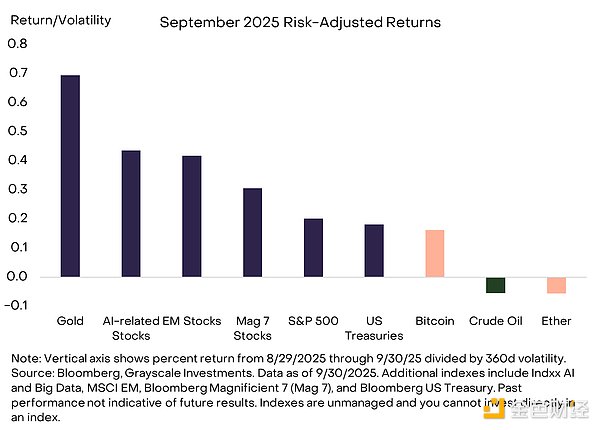
Cryptographic assets appreciated at the beginning of September but plummeted sharply later in the month. This sudden drop may be related to the liquidation of long positions in perpetual futures contracts—a unique feature of the cryptocurrency market structure. For example, according to Glassnode, on September 25, the total liquidation of ETH perpetual futures contracts reached $277 million, marking the largest single-day liquidation since April 2021 (Chart 2). After the liquidation, the funding rate (the cost of holding leveraged long positions) decreased, and prices stabilized, which may indicate that speculative traders' positions are more balanced.
Chart 2: Liquidation of Perpetual Futures Leverage Positions
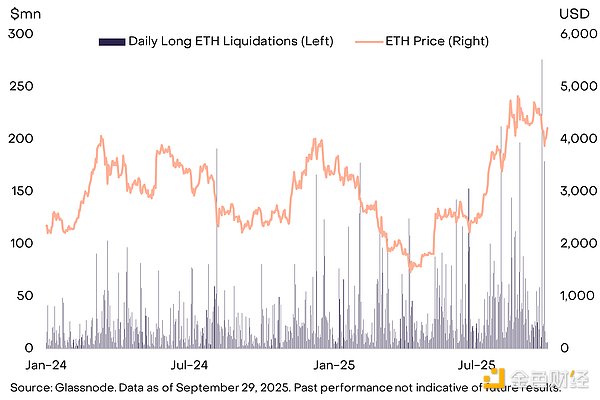
Simplified Approval for Crypto ETPs
Aside from price performance, the most significant development in September was the U.S. Securities and Exchange Commission (SEC) approving a universal listing standard for crypto ETPs. This decision provides a streamlined approval process for exchanges to launch crypto ETPs, provided the underlying tokens meet certain technical standards for trading on qualified venues. Grayscale expects that more crypto assets will meet these standards, and investors can anticipate a significant increase in the number of single-asset crypto ETPs offered on U.S. exchanges. In addition to approving the universal listing standard, the SEC also approved the listing and trading of certain Bitcoin options products.
The U.S. Senate has also made further progress on legislation regarding the structure of the crypto market—this follows the significant legislative move covering stablecoins known as the "Genius Act." The Senate Banking Committee released a new draft of the market structure bill. It includes better protections for decentralized finance (DeFi) applications and developers, which has been widely welcomed by the crypto industry. Additionally, a group of 12 Senate Democrats released a framework for crypto market structure legislation. This framework has also received positive responses from major stakeholders, indicating that there is still room for bipartisan cooperation. The House version of the market structure bill, known as the "CLARITY Act," was passed in July with bipartisan support.
The clarity of regulation in the digital asset industry continued to drive institutional activity in September. More cryptocurrency companies went public, including Figure Technologies (FIGR), which uses blockchain technology to enhance the efficiency of home equity loans, and the exchange Gemini (GEMI). Furthermore, several traditional financial institutions, including BlackRock and Nasdaq, announced plans related to tokenized assets. Additionally, institutions are working to launch new regulated financial products, including "continuous" (i.e., perpetual) futures and stablecoins compliant with the "GENIUS Act."
AI Crypto Sector Stands Out
From the perspective of the cryptocurrency industry, artificial intelligence (AI) is the best-performing sub-market, driven by several standout projects (Chart 3). Strong returns are primarily attributed to Near (NEAR), Worldcoin (WLD), and Aethir (ATH). NEAR, founded by a leader in the AI industry, is a blockchain platform tailored for AI use cases, and the adoption rate of its NEAR intents product is continuously rising. Worldcoin, founded by Sam Altman, aims to provide digital identity solutions. The price increase of the WLD token may be partially related to the new Digital Asset Trust (DAT) Eightco Holdings (ORBS). The GPU market Aethir benefits from a new partnership with Chainlink and the new DAT.
Chart 3: AI Crypto Sector Performs Exceptionally
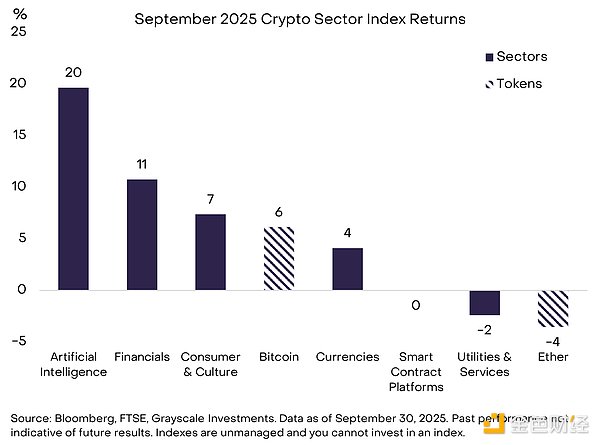
Story Protocol (IP) is a blockchain focused on intellectual property, and despite significant volatility during the month, it is another standout in the AI crypto space. Attention is primarily focused on the announcements made during the project's Origin Summit at the Korea Blockchain Week. Story has partnered with the award-winning Korean webtoon brand Solo Leveling. This collaboration will allow Solo Leveling to explore on-chain intellectual property models and potentially launch a memecoin. Story has also partnered with gaming company Verse8 to bring the web3 brands Moonbirds and Azuki into AI-generated games, enabling creators to remix and monetize these brands through on-chain enforcement of licenses and royalties.
In addition to AI-related applications, the most closely watched category in the industry is decentralized exchanges (DEX) for perpetual futures. Among them, Hyperliquid is leading the way, having become one of the top three revenue-generating applications in the cryptocurrency space. However, Hyperliquid faces new competition from Aster, a perpetual futures DEX backed by Binance founder Changpeng Zhao (Chart 4). Regardless of the outcome, it is encouraging to see DEXs capturing trading volume from centralized alternatives—decentralization is a core premise of blockchain technology and DeFi.
Chart 4: New Perpetual Futures DEX Emerges
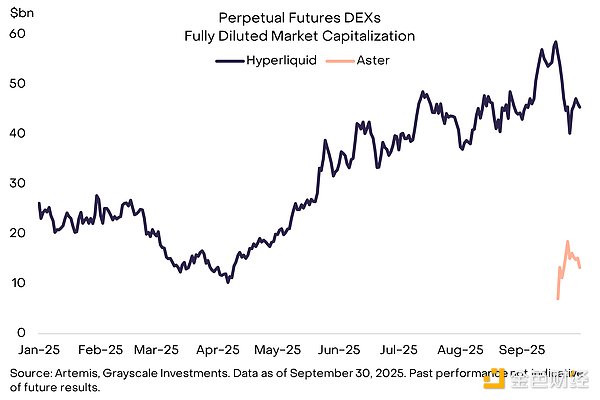
Finally, the stablecoin sector continues to evolve. For example, the Layer 1 ecosystem focused on stablecoins, Plasma, launched its mainnet and XPL token in late September. Within a week, its stablecoin supply rapidly grew to $6 billion, making it the fifth-largest blockchain by stablecoin supply, surpassing Coinbase's Layer 2 ecosystem BASE (Chart 5). Meanwhile, the largest stablecoin issuer, Tether, announced plans to raise $15 billion to $20 billion, with a valuation of about $500 billion, which would place it among the world's most valuable private companies alongside OpenAI and SpaceX.
Chart 5: Plasma, a new payment blockchain, currently ranks fifth in stablecoin supply
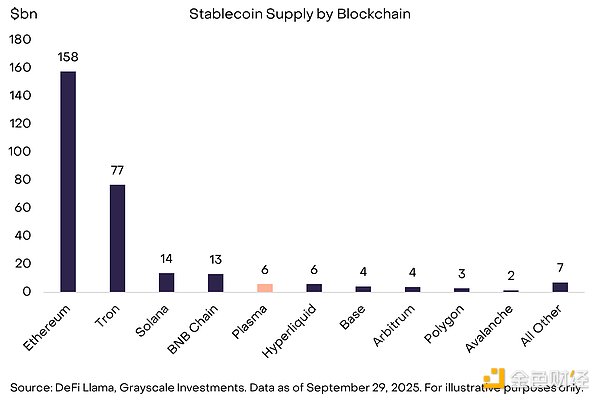
Future Outlook
As mentioned above, the cryptocurrency bull market is driven by macro demand for scarce digital assets and regulatory clarity that supports adoption. These two factors are likely to become focal points for investors again in the fourth quarter of 2025.
The Federal Reserve restarted interest rate cuts in September and hinted at one or two more cuts before the end of the year. All else being equal, lower interest rates should be viewed as favorable for the crypto asset class (as they reduce the opportunity cost of holding non-yielding assets like Bitcoin and may support investors' risk appetite).
At the same time, various macro factors may exert pressure on cryptocurrency valuations, including potential slowdowns in GDP growth and/or geopolitical tail risks. Of course, an unexpected shift by the Federal Reserve from rate cuts to rate hikes should also be seen as a risk factor for cryptocurrency valuations.
From a regulatory perspective, positive market catalysts may include: the potential introduction of staking features for crypto ETPs, more altcoin ETP listings, and the Senate passing the market structure bill. That said, these trends have at least partially been reflected in prices, so any obstacles could be seen as downside risks to valuations.
免责声明:本文章仅代表作者个人观点,不代表本平台的立场和观点。本文章仅供信息分享,不构成对任何人的任何投资建议。用户与作者之间的任何争议,与本平台无关。如网页中刊载的文章或图片涉及侵权,请提供相关的权利证明和身份证明发送邮件到support@aicoin.com,本平台相关工作人员将会进行核查。



